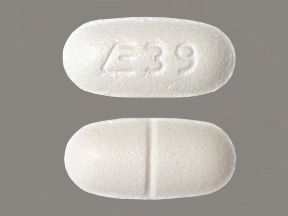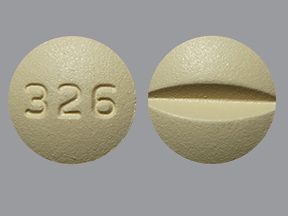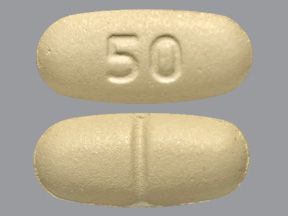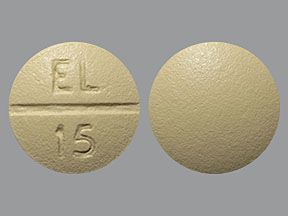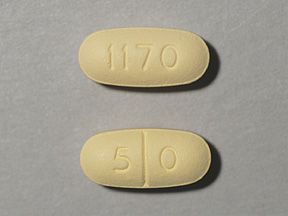Naltrexone is a generic drug that’s prescribed for opioid use disorder and alcohol use disorder. Naltrexone comes as an oral tablet and belongs to the opioid antagonist drug class.
Naltrexone is FDA-approved to treat the following conditions in adults:
- opioid use disorder (also called opioid dependence*)
- alcohol use disorder (also called alcohol dependence or alcoholism)
Naltrexone is prescribed after you’ve stopped taking opioids or drinking alcohol to help keep you from misusing these drugs again. (Misuse means taking a drug in a way other than how a doctor prescribes it.) It’s prescribed as part of a treatment program that may include counseling, psychotherapy, education, and support groups.
Drug details
You’ll find key information about naltrexone below.
- Drug form: oral tablet
- Brand-name version available? no
- Prescription required? yes
- Controlled substance? no
Naltrexone is also available as the brand name drug Vivitrol, which comes as an injection. Generic versions of Vivitrol are also available.
* With dependence, your body needs the drug to feel as it typically would.
Here are answers to some frequently asked questions about naltrexone.
Can naltrexone be prescribed for weight loss or pain?
The Food and Drug Administration (FDA) hasn’t approved naltrexone for weight loss or pain.
A combination medication containing naltrexone and bupropion (Contrave) is FDA-approved for weight loss. However, naltrexone isn’t typically prescribed on its own for this use. To learn more about taking Contrave for weight loss, talk with your doctor.
Naltrexone isn’t typically prescribed for pain. In fact, because it’s an opioid antagonist, it can block the effect of opioid pain relievers.
However, doctors may sometimes prescribe low dose naltrexone (LDN) off-label for certain types of chronic (long-term) pain. (With off-label use, a drug is prescribed for a use not approved by the FDA.) For example, some
To learn more about naltrexone’s possible use for chronic pain, talk with your doctor.
How does naltrexone compare with naloxone?
Naltrexone and naloxone are both opioid antagonist drugs. They both block the effect of opioids, but they’re prescribed for different uses.
Naltrexone is prescribed for the long-term management of opioid use disorder (OUD) and alcohol use disorder. The drug is prescribed after you’ve stopped taking opioids or drinking alcohol to help keep you from misusing these drugs again. Naloxone, on the other hand, is prescribed to reverse an opioid overdose. (Misuse means taking a drug in a way other than how a doctor prescribes.)
Naltrexone comes as a generic oral tablet and a generic injection. It’s also available as the brand-name injection Vivitrol. Naloxone comes as a generic injection and a generic nasal spray. And it’s available as brand-name nasal sprays, including Narcan and RiVive.
Naloxone is also combined with buprenorphine in certain drugs prescribed to treat OUD, such as Suboxone and Zubsolv. Naloxone is included in these drugs to help prevent their misuse.
To learn more about how naltrexone compares with naloxone, talk with your doctor.
Is naltrexone addictive?
No, naltrexone is not addictive. With addiction, a drug is taken even if it’s causing harmful outcomes.
Medications that are addictive can produce a rewarding feeling when you take them. This effect can lead to cravings for and dependence on the drug. With dependence, you rely on a drug to function, either physically or mentally. With drugs that are addictive, you may have trouble stopping use of the drug. Examples of addictive drugs include opioids and alcohol.
Naltrexone doesn’t produce a rewarding or pleasurable effect or “high” feeling. Instead, it blocks the rewarding feelings that you may have from taking opioid drugs or drinking alcohol. It’s not possible to become addicted to or dependent on naltrexone. You won’t have cravings or withdrawal symptoms* when you stop taking it.
If you have questions about naltrexone, talk with your doctor or pharmacist.
* Withdrawal symptoms are side effects that can occur when you stop taking a drug that your body has become dependent on.
The following information describes dosages that are commonly prescribed or recommended. However, be sure to take the dosage your doctor prescribes for you. Your doctor will determine the best dosage to fit your needs.
Dosage for alcohol use disorder
Here’s naltrexone dosage information for alcohol use disorder (AUD).
| Naltrexone for AUD | |
| Form | oral tablet |
| Strength | 50 milligrams (mg) |
| Dose | 50 mg |
| How often | once per day |
| Administered by | self |
Dosage for opioid use disorder
Here’s naltrexone dosage information for opioid use disorder (OUD).
| Naltrexone for OUD | |
| Form | oral tablet |
| Strength | 50 mg |
| Dose | 25 mg for the first dose, then 50 mg |
| How often | once per day |
| Administered by | self |
About taking naltrexone
Below you’ll find information about key dosage issues.
- When to take: You should take naltrexone once per day.Taking the medication around the same time of day helps keep a steady level of the drug in your body. This helps naltrexone work effectively.
- If you miss a dose: If you miss a dose, take it as soon as possible, then continue with your typical dosing schedule. However, if you miss a dose and it’s almost time for your next dose, skip the missed dose and continue with your typical dosing schedule.
- Taking naltrexone with food: You can take naltrexone either with or without food.
- Crushing, splitting, or chewing naltrexone: You can split naltrexone oral tablet. For example, if your doctor prescribes a 25-mg dose, you’ll need to split the tablet in half to get this dose. Naltrexone oral tablet is meant to be swallowed. If you have trouble swallowing it, ask your doctor if you can crush or chew the tablet.
- Length of treatment: Naltrexone is meant to be a long-term treatment. If you and your doctor determine that naltrexone is safe and effective for you, you’ll likely take it long term.
Overdose
Do not take more naltrexone than your doctor recommends. For some drugs, doing so may lead to unwanted side effects or overdose.
What to do in case you take too much naltrexone
If you think you’ve taken too much of this drug, call your doctor. You can also call America’s Poison Centers at 800-222-1222 or use its online tool. However, if your symptoms are severe, call 911 or your local emergency number, or go to the nearest emergency room right away.
Naltrexone can cause mild or serious side effects. The following lists contain some of the key side effects that may occur while taking naltrexone. These lists do not include all possible side effects.
For more information about the possible side effects of naltrexone, talk with your doctor or pharmacist. They can give you tips on how to manage any side effects that may be concerning or bothersome.
Note: The Food and Drug Administration (FDA) tracks side effects of drugs it has approved. If you’d like to notify the FDA about a side effect you’ve had with naltrexone, you can do so through MedWatch.
Mild side effects
Below is a partial list of mild side effects of naltrexone. To learn about other mild side effects, talk with your doctor or pharmacist, or view the drug’s prescribing information.
Mild side effects of naltrexone can include:
- nausea and vomiting
- dizziness
- anxiety or nervousness
- insomnia or sleepiness
- fatigue
- abdominal pain or cramps
- joint and muscle pain
- headache
- sexual side effects, including erectile dysfunction and delayed ejaculation
- mild allergic reaction*
Most of these side effects may go away within a few days to a couple of weeks. However, if they become more severe or don’t go away, talk with your doctor or pharmacist.
* For more information about allergic reaction and naltrexone, see “Allergic reaction” below.
Serious side effects
Serious side effects from naltrexone aren’t common, but they can occur. Call your doctor right away if you have serious side effects. Call 911 or your local emergency number if your symptoms feel life threatening or if you think you’re having a medical emergency.
Serious side effects can include:
- liver problems, such as hepatitis
- depression
- risk of opioid withdrawal symptoms if you take an opioid in the 10 days before starting naltrexone
- risk of opioid overdose if you take opioids during treatment with naltrexone or after stopping naltrexone
- severe allergic reaction*
* For details about allergic reaction and naltrexone, see “Allergic reaction” below.
Suicide prevention
If you know someone at immediate risk of self-harm, suicide, or hurting another person:
- Ask the tough question: “Are you considering suicide?”
- Listen to the person without judgment.
- Call 911 or the local emergency number, or text TALK to 741741 to communicate with a trained crisis counselor.
- Stay with the person until professional help arrives.
- Try to remove any weapons, medications, or other potentially harmful objects if it’s safe to do so.
If you or someone you know is having thoughts of suicide, a prevention hotline can help. The 988 Suicide and Crisis Lifeline is available 24 hours a day at 988. During a crisis, people who are hard of hearing can use their preferred relay service or dial 711 then 988.
Allergic reaction
As with most drugs, some people can have an allergic reaction after taking naltrexone. This side effect wasn’t reported in clinical trials of this drug but can still occur.
Symptoms of a mild allergic reaction can include:
A more severe allergic reaction is rare but possible. Symptoms of a severe allergic reaction can include:
- swelling under your skin, typically in your eyelids, lips, hands, or feet
- swelling of your tongue, mouth, or throat
- trouble breathing
Call your doctor right away if you have an allergic reaction to naltrexone, as the reaction could become severe. Call 911 or your local emergency number if your symptoms feel life threatening or if you think you’re having a medical emergency.
The Food and Drug Administration (FDA) approves prescription drugs such as naltrexone to treat certain conditions. Naltrexone oral tablet may also be prescribed off-label for other conditions. Off-label drug use is when an FDA-approved drug is prescribed for a purpose other than what it’s approved for.
Naltrexone for alcohol use disorder
Naltrexone is FDA-approved to treat alcohol use disorder (AUD) in adults. This condition is also known as alcohol dependence or alcoholism. With dependence, your body needs a drug to feel as it typically would.
Naltrexone is prescribed after you’ve stopped drinking alcohol. The medication helps reduce the rewarding feelings you may get from drinking alcohol and the cravings you may have for alcohol. This can help keep you from drinking alcohol again.
Naltrexone is prescribed as one part of a treatment program for AUD. The program may include counseling, psychotherapy, education, and support groups.
Naltrexone for opioid use disorder
Naltrexone is FDA-approved to treat opioid use disorder (OUD) in adults. This condition is also known as opioid dependence.
Opioids are powerful, addictive drugs that have high risks of misuse and dependence. (With addiction, a drug is taken even if it’s causing harmful outcomes. Misuse means taking a drug in a way other than how a doctor prescribes.) Examples include strong pain relievers such as oxycodone (OxyContin, others) and certain illegal drugs such as heroin.
Naltrexone is prescribed to treat OUD after you’ve stopped taking opioids and have been through detoxification (detox). With detox, your body clears any remaining opioids from your body. You must stop taking opioids at least 7–10 days before you start taking naltrexone.
Naltrexone is prescribed to help keep you from misusing opioids again. It helps reduce the rewarding feelings you may get from taking opioids and the cravings you may have for these drugs. It’s prescribed as one part of a treatment program that may include counseling, psychotherapy, education, and support groups.
Naltrexone and children
Naltrexone is not FDA-approved for use in children under age 18 years.
Naltrexone can interact with several other medications. It can also interact with certain supplements as well as certain foods.
Before taking naltrexone, talk with your doctor and pharmacist. Tell them about all prescription, over-the-counter, and other drugs you take. Also, tell them about any vitamins, herbs, and supplements you use. Sharing this information can help you avoid potential interactions.
Interactions with medications, foods, and supplements
Below is a list of medications that can interact with naltrexone. This list does not contain all drugs that may interact with naltrexone. If you have questions about drug interactions that may affect you, ask your doctor or pharmacist.
Medications that can interact with naltrexone include:
- opioid pain relievers, such as oxycodone (OxyContin, others) and tramadol (Ultram, others)
- diarrhea medications that contain opioids, such as loperamide (Imodium)
- cough and cold medications that contain opioids, such as codeine or dextromethorphan (Delsym)
Naltrexone hasn’t been reported to interact with supplements or foods. However, this doesn’t mean that interactions can’t happen. For this reason, you should talk with your doctor or pharmacist if you have questions about interactions that may affect you.
Alcohol interaction
Alcohol is not known to interact with naltrexone. But naltrexone and alcohol can both affect your liver. So you may have a raised risk of liver problems if you drink alcohol while taking naltrexone. You should avoid drinking alcohol during treatment with naltrexone.
Keep in mind that if you take naltrexone for alcohol use disorder, you should not drink alcohol. The medication should reduce your desire to drink alcohol. If you’re concerned about avoiding alcohol while taking naloxone, talk with your doctor.
Naltrexone is prescribed to treat opioid use disorder (OUD) and alcohol use disorder (AUD). It’s prescribed after you’ve stopped taking opioids or drinking alcohol to help keep you from misusing these drugs again. (Misuse means taking a drug in a way other than how a doctor prescribes.)
Opioids are powerful pain-relieving drugs. They act on special sites in your brain called opioid receptors. They relieve pain but can also produce pleasurable, rewarding, and “high” feelings. These feelings can lead to cravings for the drug, dependence on the drug, and OUD. (With dependence, you rely on a drug to function as you typically would, physically or mentally.)
Drinking alcohol can also produce pleasurable and rewarding feelings. These feelings partly occur because alcohol increases your body’s production of endorphins. Endorphins are your body’s natural pain-relieving and “feel-good” chemicals. They act on opioid receptors in your brain. The feelings they produce when drinking alcohol can lead to alcohol cravings, alcohol dependence, and AUD.
Naltrexone works by blocking opioids and endorphins from acting on the opioid receptors in your brain. This stops them from producing the pleasurable and rewarding feelings you would typically get from taking opioids or drinking alcohol. This action helps reduce your desire to take these drugs.
As with all medications, the cost of naltrexone can vary. The actual price you’ll pay depends on your insurance plan, your location, and the pharmacy you use.
Drug coupons: You can visit Optum Perks* for price estimates of naltrexone. These estimates are based on the use of Optum Perks coupons. Note: Optum Perks coupons cannot be used with any insurance copays or benefits.
Financial and insurance assistance: If you need financial support to pay for naltrexone, or if you need help understanding your insurance coverage, help is available.
To learn more about saving money on prescriptions, check out this article.
* Optum Perks is a sister site of Medical News Today.
If you can become pregnant, consider the following information about pregnancy, birth control, and breastfeeding.
Naltrexone and pregnancy
It’s not known whether naltrexone should be taken during pregnancy. If you’re planning a pregnancy or can become pregnant, talk with your doctor before taking this medication.
Naltrexone and birth control
It’s not known whether naltrexone is safe to take during pregnancy. If you’re sexually active and you or your partner can become pregnant, talk with your doctor about your birth control needs while you’re taking naltrexone.
Naltrexone and breastfeeding
It’s not known whether naltrexone should be taken while breastfeeding. If you’re currently breastfeeding or planning to do so, talk with your doctor before taking this medication.
Other drugs are available that can treat your condition. Some may be a better fit for you than others. If you’re interested in finding an alternative to naltrexone, talk with your doctor. They can tell you about other medications that may work well for you.
The following drugs are alternatives to naltrexone for opioid use disorder:
- buprenorphine (Brixadi, Sublocade)
- buprenorphine/naloxone (Suboxone, Zubsolv)
- methadone (Methadose)
- naltrexone injection (Vivitrol)
The following drugs are alternatives to naltrexone for alcohol use disorder:
- acamprosate
- disulfiram
- gabapentin (Horizant, Neurontin)
- naltrexone injection (Vivitrol)
- topiramate (Topamax, Qudexy XR)
This drug comes with several precautions.
Before taking naltrexone, discuss your health history with your doctor. Naltrexone may not be right for you if you have certain medical conditions or other factors affecting your health. Be sure to talk with your doctor if any of the following apply to you:
- currently taking opioid pain relievers
- have taken opioids in the last 7–10 days
- current dependence* on opioids, including methadone or buprenorphine
- current opioid withdrawal symptoms
- liver problems
- kidney problems
- past allergic reaction to this or a similar drug
- pregnancy
- breastfeeding
Note: For more information about the potential negative effects of naltrexone, see the “Naltrexone side effects” section above.
* With dependence, your body needs the drug to feel as it typically would.
Disclaimer: Medical News Today has made every effort to make certain that all information is factually correct, comprehensive, and up to date. However, this article should not be used as a substitute for the knowledge and expertise of a licensed healthcare professional. You should always consult your doctor or another healthcare professional before taking any medication. The drug information contained herein is subject to change and is not intended to cover all possible uses, directions, precautions, warnings, drug interactions, allergic reactions, or adverse effects. The absence of warnings or other information for a given drug does not indicate that the drug or drug combination is safe, effective, or appropriate for all patients or all specific uses.

